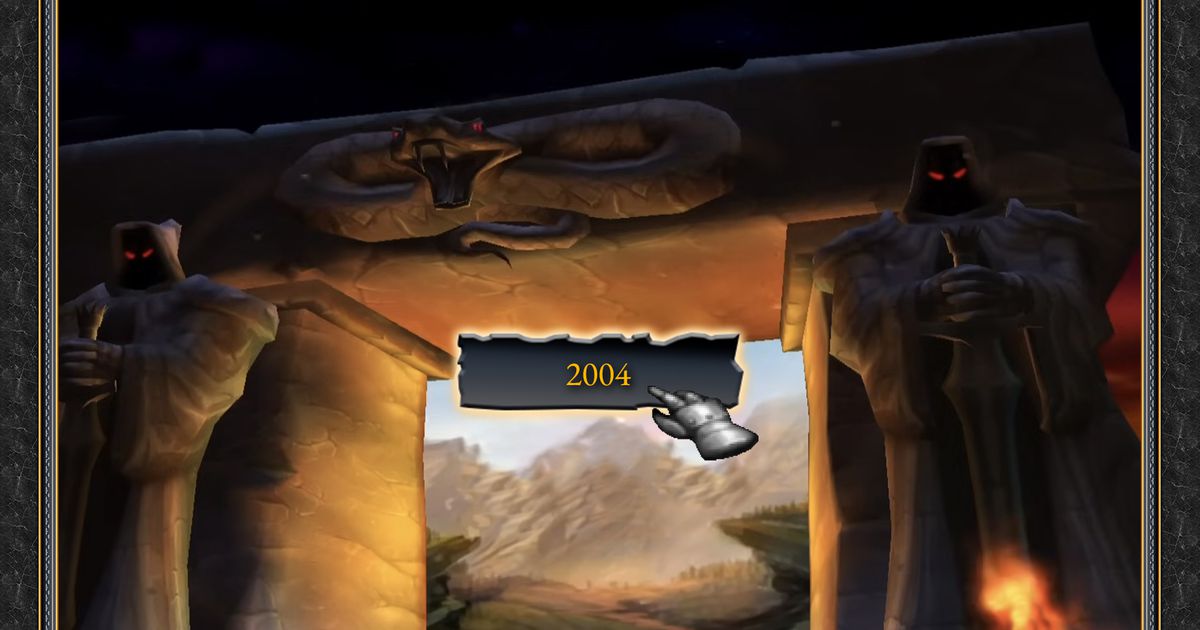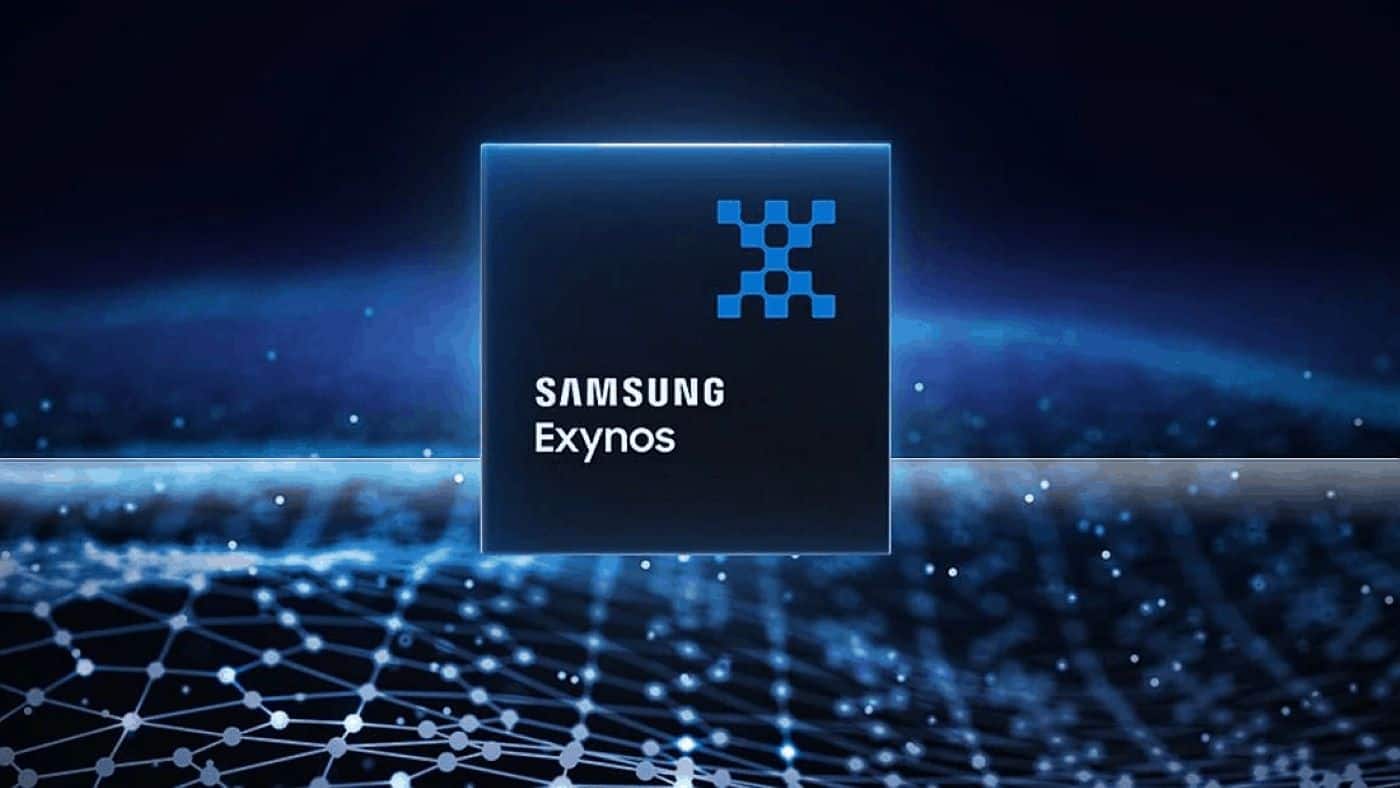Technology
World of Warcraft is still here, and it’s still huge

World of Warcraft, or WoW, is like the Red Hot Chili Peppers of the massively multiplayer online roleplaying genre: not only is it still going strong but it’s also somehow even bigger than you thought. World of Warcraft’s current numbers aren’t public, but one recent educated guess came in at 7 million paying subscribers, which, at $15 / month, would make the game a billion-dollar earner by itself. Its developer, Blizzard, merged with Activision in 2008, and Microsoft gobbled up both companies in 2022, but World of Warcraft remains a load-bearing spine of the newly formed corporate turducken. The game that redefined gold mining for the 21st century is still a 19th-century gold mine for its landlords.
It’s also thriving in a subscription ecosystem that it helped to legitimize. World of Warcraft debuted in 2004, during an era when you still had to buy games in boxes from stores. The runaway success of Blizzard’s always-on portal to Azeroth proved that, for the right product, studios could charge a recurring fee beyond the initial cost of the core game’s (at the time) formidable five installation CDs. Here, in the enshittified 2020s, we’ve all grown used to renting our culture by the month, but it was genuinely pathbreaking for World of Warcraft to have 12 million subscribers at its peak in 2010. It didn’t invent the monthly model, which had already gained traction in games like Ultima Online and EverQuest during the dawn of the massively multiplayer online roleplaying game (MMORPG) genre. But World of Warcraft’s success took that recurring charge mainstream and helped popularize the unassailable business logic that having your customers pay you once was worse than having them pay you until they decided or remembered to stop.
As World of Warcraft turns 20, its enduring financial success arguably pales in comparison to its cultural significance. I asked Angela Washko, a new-media artist who staged several notable performance pieces inside the game world, what she considered World of Warcraft’s biggest contribution, for better or worse. “World of Warcraft expanded the notion of what public space was,” she told me. “I saw the bonds created amongst members of my guilds moving beyond the game space, as players flew across the country to meet each other.” Everyone I talked to about World of Warcraft’s legacy seemed to mention someone or other getting married, either in the game itself or here in reality after meeting in the game. “I think the degree of immersion and dissolving of the boundary between ‘real life’ and ‘fantasy’ within World of Warcraft was really a turning point in computing culture,” Washko said, adding that World of Warcraft “changed the conversation around video games from being something that was ‘an escape from everyday life’ to something that was an extension of one’s social life and happened to take place in a virtual environment.”
Through her own work, Washko also explored the less savory side of a fantasy game populated by real people; her Council on Gender Sensitivity and Behavioral Awareness in World of Warcraft involved traveling from town to town to educate passersby about feminism and discuss how the game’s dominant culture often created a hostile environment for its marginalized players. I recalled my own playing days, when you could be flying into a town on your hippogryph, minding your own business, only to be deluged by a wave of sewer-grade hate speech on a public text channel. We now take it for granted that online spaces reflect the social dynamics of the people who occupy them, including and especially the problematic ones, but in many ways, World of Warcraft was the kobold in this particular coal mine.
I first encountered the Warcraft universe like many ’90s computer kids: as a series of top-down, real-time strategy games about economic management and cartoon fantasy violence. The world (lowercase) of Warcraft pitted the seemingly noble Alliance (humans, elves, dwarves, your Tolkienesque usual suspects) against the villainized Horde (orcs, trolls, and other stock monster-humanoids from the trope factory) in a vicious-with-a-touch-of-slapstick conflict spanning three main titles and numerous expansions between 1994 and 2003. If no one was using the phone, you could play against your friends over a modem. The series had a rich and goofy aesthetic of exaggerated proportions, saturated colors, and sarcastic jokes. The units that ran your economy were literal simpering peons, which gave everything a barrel-shaped, vaguely comedic flavor that played well against the high-gloss cinematic interludes that would become Blizzard’s calling card.
Flush with revenues from its flagship series, Blizzard began exploring how it might expand Warcraft’s popular lore into other types of games. First, a point-and-click game called Warcraft Adventures — a late-1990s attempt at LucasArts-style vintage puzzle-solving in a cel-shaded take on the mythos — was infamously canceled for not meeting Blizzard’s internal release standards. (It also leaked, fully playable, not too long ago. Based on what I’ve seen, Blizzard was right.) Then, starting in 2001, an experimental team of a few dozen people got busy building a whole new engine that would bring Azeroth into 3D for the first time and let players meet, socialize, and slaughter skeletons together. It was a primordial example of the modern phenomenon where a corporation exploits its intellectual property by jumping genres and colonizing a new medium. It was also how they’d get me.
There are plenty of humbling ways to use Gmail’s internal search function, especially if you’ve had your account for roughly as long as World of Warcraft has existed. For one example, consider my collected personal correspondence surrounding World of Warcraft, from the peak years of its involvement in my life. When I queried “Warcraft before:2007/1/1,” it yielded about two dozen results, and together, they trace a blunt biography of that moment: landing a big new job; getting hella dumped; and “spending two months as an antisocial hermit,” as I told a friend in a Gchat in early 2006. (And how about World of Warcraft outliving Gchat?)
Reviewing the private record, it’s clear World of Warcraft tore through my life like an experienced raiding party of max-level grinders through the Deadmines. Admittedly, it was the kind of nymph-stage young adult life that was conceptually made of crepe paper and easily shredded by a video game. But something about the predictable rhythm of ordering junk food delivery after an exhausting workday, logging onto World of Warcraft, and hopping through some lush environment searching for herbs to make into sellable virtual potions just drew me in, one night after another.
This aspect of World of Warcraft — its knack for blurring the line between work and fun until the casual observer might not quite recognize it as either — often came up when I spoke to others about their experiences. “One thing WoW proved on a large scale is that people will turn a game into a job at the slightest provocation,” said Cory O’Brien, now a narrative and level designer for games like Redfall and HoloVista. “I remember spending hours and hours and hours grinding for dust so that I could enchant magic items. I remember smelting tin and copper to make bronze.” The elaborate crafting system in World of Warcraft, which often required materials gained through repetitive in-game labor, represented an explosion in the popularity of the now-ubiquitous mechanic where you, as a player, find some stuff and turn it into something else. “I still play all these more recent games like Minecraft, Project Zomboid, and Valheim that are literally just that crafting part,” O’Brien told me. “I spend so much time doing monotonous, repetitive tasks, for free, because somehow we have discovered that that’s fun.” Here, in 2024, it’s hard not to feel a vaguely sinister undertone to all of this as the rising tides of capitalistic overreach gamify the gig economy and hijack the natural human affinity for rewards for their own extractive purposes. But to Washko’s point about an expanded social life, one reason this all worked is that you were often helping out real people, with “legitimate needs” in the scope of the game. You were rarely just doing these things for yourself.
It wasn’t always exactly a waste, either. Andrew Simone, now a project manager in tech, attributes a large swath of his professional tool kit to skills he gained as a guild leader in World of Warcraft. “I actually stopped playing WoW largely because I felt like I was managing my guild more than my actual professional jobs,” he told me, proceeding to outline a frightening slate of workplace-flavored tasks that included interviewing prospective guild candidates, analyzing performance metrics from the game’s multiuser boss fights, dealing with in-guild sexual harassment, managing schedules across the world to hold meetings about all these things, writing guides for new members, and even “cultivating a kind of guild culture so people enjoyed being there,” which is an incredible thing to say about something that is already ostensibly a game. I know there are countless former guild leaders reading this and nodding along because their current workday docket has nothing on mediating a 10-way raiding party dispute over who should get the legendary enchanted pauldrons that just dropped.
On the other hand: plenty of it was a giant waste. I can’t tell you, back in the day, how many hours I was technically playing World of Warcraft but ignoring the game itself while I sifted through, rearranged, and tested various custom add-ons for its labyrinthine, fintech-ass user interface. World of Warcraft is a persistent software ecosystem with clients and servers and all kinds of data flying between them at all times — it’s just not necessarily exposed to every player in full. An entire cottage industry of user-created UI mods sprung up to assign repeatable actions to shortcut keys, or process advanced analytics from game logs like Simone would do for his guild, or implement an “automatic goblin therapist” who answers any incoming whispers to your character with an in-game implementation of the classic ELIZA protocol. Letting players scratch their own itches for how the game felt to play was also a clever way to limit complaints about the parts of it that weren’t as polished. I never got much into the game’s advanced content myself, but for those who did, pretty much the only way to follow the expected meta of guild raids was to use externally designed UI add-ons. World of Warcraft had the audacity to make players create their own custom cockpits for the game and ended up creating a kind of recursive procrastination where you could even distract yourself from your intended leisure activity. Anyone who’s ever rearranged the app icons on their phone knows just how ubiquitous this kind of time-consuming “metawork” has become.
Recently, I engaged in a more contemporary form of networked social entertainment — sitting around a big TV with friends, watching four strangers play a game together on Twitch. Just as things were picking up, the stream cut out, and an algorithmically inserted video ad began to play: it was for World of Warcraft. This was a group of mostly game designers, and before I had a chance to say anything, someone else piped in to mention World of Warcraft was 20 years old now — and formally impactful enough that working game makers still know its birthday.
Seeing that ad, writing this piece, none of it was enough to get me to reinstall World of Warcraft. (It’s a good thing the game never stooped to making you feed your in-game pets.) I didn’t really feel I had to replay the game to measure its influence because its influence is everywhere. Every monthly subscription, in-game economy, or digital “third place” where lives bleed into online connections owes it some spiritual recognition as prior art; those things have all become inescapable. Twenty years later, we are all living in the World of Warcraft.
Technology
Best Ninja Foodi deals: Pressure cookers, grills, air fryers

Ninja is a great small kitchen appliance brand if you’re looking for both convenience and savings. It makes some of the best air fryers and best pressure cookers, and when you’re shopping Ninja Foodi deals you can almost always find some of the best air fryer deals. But the Ninja Foodi lineup has all sorts of ways to cook across a range of appliances, and with so much to choose from we thought we’d track down all of the best Ninja Foodi deals in one place. You’ll find them all below. You can also shop refrigerator deals and oven deals if you’re looking for larger kitchen appliances, or there are some really great coffee maker deals worth shopping right now, and they include both Keurig deals and Nespresso deals.
Contents
- Ninja Foodi PossibleCooker Pro 8.5-quart multicooker — $138, was $150
- Ninja Foodi 11-in-1 6.5-quart pressure cooker — $150, was $200
- Ninja Foodi 2-in-1 Flip Toaster — $120, was $130
- Ninja Foodi 8-in-1 digital air fry oven — $194, was $220
- Ninja Foodi 10-in-1 Smart XL air fryer (renewed) — $180, was $300
- Ninja Foodi 6-in-1 10-quart air fryer (renewed) — $189, was $249
- Ninja Foodi XL 6-in-1 indoor grill — $230, was $260
- Ninja Foodi smoothie bowl maker — $100, was $120
- Ninja Foodi SS351 Power Blender & Processor System — $180, was $200
- Ninja Professional Plus Kitchen System — $180, was $220
Ninja Foodi PossibleCooker Pro 8.5-quart multicooker — $138, was $150

The Ninja Foodie PossibleCooker Pro is capable of saving you a lot of counter space, as it can replace 14 different cooking tools and appliances. It can slow cook, steam, warm, sauté, steam, and roast, and it can do the work of appliances such as cast iron skillets, saucepans, stock pots, and Dutch ovens. It’s perfect for entertaining, as it has an 8.5-quart capacity that allows you to make foods like chili for up to 20 people. The Ninja Foodi PossibleCooker Pro cooks up to 30% faster than conventional ovens, and offers easy cleanup with a nonstick pot.
Ninja Foodi 11-in-1 6.5-quart pressure cooker — $150, was $200

The Ninja Foodi 11-in-1 6.5-quart pressure cooker is simple yet versatile. It offers 14 different cooking functions, with pressure cooking, baking, air frying, broiling, slow cooking, and steaming among them. It also has Tendercrisp Technology, which combines the best of pressure cooking and air fryer and allows you to get faster, juicier, and crispier results. This pressure cooker has a large capacity of 6.5 quarts, which should be plenty for feeding small families or for preparing things like appetizers for gatherings.
Ninja Foodi 2-in-1 Flip Toaster — $120, was $130

This 2-in-1 flip toaster is one of the more affordable members of the Ninja Foodi lineup. It’s both a toaster and a compact toaster oven, allowing for multifunctional usage with a small footprint. It won’t take up a ton of space on the countertop and still brings a way to toast, defrost, bake, broil and reheat to your kitchen. This is a great Ninja Foodi option for apartment dwellers or anyone with a smaller kitchen who still likes to cook in a variety of ways.
Ninja Foodi 8-in-1 digital air fry oven — $194, was $220

Part toaster oven, part air fryer, you’ll get delicious and crispy foods out of this beast, with fast cooking — up to 60% faster than a traditional oven. Even baking means you won’t end up with half the pizza or wing burnt, and the other half undercooked. The digital crisp controls allow you to adjust temperatures, heat source, and airflow for better precision. It comes with a wire rack, sheet pan, air fry basket, and removable crumb tray, everything you need to get cooking right away.
Ninja Foodi 10-in-1 Smart XL air fryer (renewed) — $180, was $300

If you want the unique crispness that only an air fryer can provide, but you want it on, say, an entire turkey, you’ll need a large air fryer oven. It’s basically an air fryer shaped like a toaster oven, and it has all the capabilities of both, and more. Since it’s smaller than an oven and can get practically air tight, it has 10 times the power of a traditional convection oven. It can fit a five-pound chicken in it, and has over a square foot of space, so you could load multiple pizzas in at once. It can preheat in 90 seconds, so it’ll be ready to go before you oven gets a chance to catch up.
Ninja Foodi 6-in-1 10-quart air fryer (renewed) — $189, was $249

The Ninja Food 6-in-1 air fryer is the ultimate air frying experience. It has two baskets with DualZone technology, which allows you to cook with each basket independently of one another. This allows you to cook two different foods at the same time, should you so choose, as well as prepare smaller meals in a single basket that’s sized more appropriately for it. Each basket has a 4-quart capacity, and combined you can cook up to 8-quarts with functions that include air frying, roasting, reheating and dehydrating.
Ninja Foodi XL 6-in-1 indoor grill — $230, was $260

If you’d like to move some of your outdoor grilling adventures to the indoors you can do so with the Ninja Foodi XL 6-in-1 indoor grill. It has six different preset cooking functions that include grilling, air crisping, roasting, baking, broiling, and dehydrating. Its extra-large capacity allows it to cook up to six steaks or up to 24 hot dogs, as well as some side dishes. This grill will cook with up to 75% less fat with its air frying technology, and it cleans up easily and has a fairly compact design that will allow you to return it to a cabinet when you’re done.
Ninja Foodi smoothie bowl maker — $100, was $120

If you’re looking to bring a healthier twist to breakfast, the Ninja Foodi Smoothie Bowl Maker should fit nicely on your counter. It can power through frozen foods with less liquid for perfect smoothie bowls, nut butters, and blender ice cream. It has preset programs for one-touch smoothies, extractions, bowls, and spreads. It also has two manual programs to pulse and start/stop. The Ninja Foodi Smoothie Bowl Maker cleans up easily and has blender cups and bowls that are easy to take on the go or store with included lids.
Ninja Foodi SS351 Power Blender & Processor System — $180, was $200

This is Ninja’s most powerful blender system. It crushes, food process, and makes smoothie bowls and dough, all through a singular base. It has smarttorque technology that produces 1400-peak-watts of power, making it capable of blending through heavy loads without stalling or the need to stir or shake. Its six versatile functions will keep you busy being creative in the kitchen for as long as you may like, and it comes in at a perfect price with this deal.
Ninja Professional Plus Kitchen System — $180, was $220

The Ninja Professional Plus Kitchen System features a modern design and more functionality than previous generations. Food processing entails usse of the 8-cup precision processor bowl which provides precision processing even for chopping and smooth purees. It has five versatile functions that allow you to creat smootheis, frozen drinks, nutrient extractions, chopped mixtures, and dough, all at the touch of a button. The XL capacity of this blender and food processor is great for making large batches for both family and guests.
Technology
New Exynos 2500 version emerges with enhanced specifications

The latest version of the Exynos 2500 has been spotted on the Geekbench database. While its model number remains the same as the previous version, it boasts a significant performance upgrade.
The Exynos 2500 gains extra CPU cores
The newly listed Exynos 2500 version features a powerful 10-core architecture. This marks a significant upgrade from its predecessor. The chip includes three Cortex-X925 CPU cores clocked at 2.59 GHz. It also has five Cortex-A725 CPU cores running at 2.25 GHz and two Cortex-A520 cores operating at 1.75 GHz. These enhancements point to a stronger emphasis on performance.
Samsung also enhanced the GPU in this Exynos 2500 version. The AMD Radeon-based Xclipse 950 GPU now includes additional cores, increasing its capabilities. This update focuses on enhancing graphics performance for gaming and multimedia applications. The GPU’s clock speed remains at 1.3 GHz, but its increased core count hints at a significant boost in rendering capabilities.
The company is currently grappling with its processor strategy for the Galaxy S25 lineup. While rumors are indicating that the Galaxy S25, Galaxy S25+, and Galaxy S25 Ultra may utilize the Snapdragon 8 Elite chip, reports from SamMobile suggest that the company has not entirely abandoned its in-house Exynos 2500 version. According to the outlet, if production yields improve, Samsung may still opt to use the Exynos 2500 in the Galaxy S25 and S25+ models.
The Geekbench listing also provides insights into the performance metrics of the Exynos 2500. It boasts an OpenCL score of 15,960, indicating impressive graphical capabilities. The device operates on Android 15 and features a memory size of 6.90GB, enhancing its multitasking potential.
Unclear future for the Exynos 2500
The exact role of the new Exynos chip in Samsung’s lineup remains uncertain. With two additional CPU cores and improved GPU capabilities, it seems designed for high-end devices, potentially suited for tablets and laptops. However, whether this version will make it to the market or be exclusive to certain models is still unknown.
The latest Geekbench listing adds a layer of intrigue to Samsung’s processor plans. As the Galaxy S25 series launch approaches, it remains to be seen how the Exynos 2500 will fit into the company’s broader strategy.
Technology
Netflix’s The Electric State trailer shows off cartoony robots and oversized VR headsets

Netflix has released the first trailer for , a post-apocalyptic road from Marvel (and Community) mainstays The Russo Brothers. The adaptation of Simon Stålenhag’s 2018 graphic novel is set in a retro-futuristic version of the ’90s after a robot uprising. It tells the story of Michelle, an orphaned teenager (Millie Bobby Brown) who ventures across the west of the US to look for her younger brother with a smuggler (a mustachioed Chris Pratt) and a pair of robots.
The movie’s look draws heavily from , right down to the oversized VR helmets. The robots, in particular the one accompanying Michelle, have a cartoon-inspired aesthetic that wouldn’t look out of place in Fallout. A large teddy bear robot can be seen as part of a parade of machines, while our heroes appear to face off against a massive one that looks a little like Sonic the Hedgehog.
Meanwhile, the whole “slowed down iteration of a popular song in a movie trailer” thing might have jumped the shark with the version of Oasis’ “Champagne Supernova” that plays over the top of this. It fits the ’90s setting, of course, but I couldn’t help but laugh as soon as I recognized it.
The movie has a hell of a cast. Alongside Brown and Pratt, it stars Ke Huy Quan, Jason Alexander, Woody Harrelson, Anthony Mackie, Brian Cox, Jenny Slate, Giancarlo Esposito and Stanley Tucci. The Electric State hits Netflix on March 14.
Technology
Zyphra’s Zyda-2 dataset enables small enterprise model training

Join our daily and weekly newsletters for the latest updates and exclusive content on industry-leading AI coverage. Learn More
Zyphra Technologies, the company working on a multimodal agent system combining advanced research in next-gen SSM hybrid architectures, long-term memory and reinforcement learning, just released Zyda-2, an open pretraining dataset comprising 5 trillion tokens.
The offering comes as the successor of the original Zyda dataset. It is five times larger in size and covers a vast range of topics and domains to ensure a high level of diversity and quality – which is critical for training robust and competitive language models.
But, that’s not the user profile of Zyda-2. There are many open datasets on Hugging Face for training cutting-edge AI models.
What makes this dataset unique is that it has been distilled to possess the strengths of the top existing datasets and eliminate their weaknesses.
This gives organizations a way to train language models that show high accuracy even when operating across edge and consumer devices on a given parameter budget.
The company trained its Zamba2 small language model using this dataset and found it to be performing much better than those trained with other state-of-the-art open-source language modeling datasets on HF.
What does Zyda-2 bring to the table?
Earlier this year, as part of the effort to build highly powerful small models that could automate a range of tasks cheaply, Zyphra went beyond model architecture research to start constructing a custom pretraining dataset by combining the best permissively licensed open datasets – often recognized as high-quality within the community.
The first release from this work, Zyda with 1.3 trillion tokens, debuted in June as a filtered and deduplicated mashup of existing premium open datasets, specifically RefinedWeb, Starcoder C4, Pile, Slimpajama, pe2so and arxiv.
At the time, Zyda performed better than the datasets it was built upon, giving enterprises a strong open option for training. But, 1.3 trillion tokens was never going to be enough. The company needed to scale and push the benchmark of performance, which led it to set up a new data processing pipeline and develop Zyda-2.
At the core, Zyphra built on Zyda-1, further improving it with open-source tokens from DCLM, FineWeb-Edu and the Common-Crawl portion of Dolma v1.7. The original version of Zyda was created with the company’s own CPU-based processing pipeline, but for the latest version, they used Nvidia’s NeMo Curator, a GPU-accelerated data curation library. This helped them reduce the total cost of ownership by 2x and process the data 10x faster, going from three weeks to two days.
“We performed cross-deduplication between all datasets. We believe this increases quality per token since it removes duplicated documents from the dataset. Following on from that, we performed model-based quality filtering on Zyda-1 and Dolma-CC using NeMo Curator’s quality classifier, keeping only the ‘high-quality’ subset of these datasets,” Zpyphra wrote in a blog post.
The work created a perfect ensemble of datasets in the form of Zyda-2, leading to improved model performance. As Nvidia noted in a separate developer blog post, the new dataset combines the best elements of additional datasets used in the pipeline with many high-quality educational samples for logical reasoning and factual knowledge. Meanwhile, the Zyda-1 component provides more diversity and variety and excels at more linguistic and writing tasks.
Distilled dataset leads to improved model performance
In an ablation study, training Zamba2-2.7B with Zyda-2 led to the highest aggregate evaluation score on leading benchmarks, including MMLU, Hellaswag, Piqa, Winogrande, Arc-Easy and Arc-Challenge. This shows model quality improves when training with the distilled dataset as compared to training with individual open datasets.

“While each component dataset has its own strengths and weaknesses, the combined Zyda-2 dataset can fill these gaps. The total training budget to obtain a given model quality is reduced compared to the naive combination of these datasets through the use of deduplication and aggressive filtering,” the Nvidia blog added.
Ultimately, the company hopes this work will pave the way for better quality small models, helping enterprises maximize quality and efficiency with specific memory and latency constraints, both for on-device and cloud deployments.
Teams can already get started with the Zyda-2 dataset by downloading it directly from Hugging Face. It comes with an ODC-By license which enables users to train on or build off of Zyda-2 subject to the license agreements and terms of use of the original data sources.
Source link
Technology
The top VCs to judge the Startup Battlefield Final at Disrupt 2024

TechCrunch Disrupt 2024 is just a week away. Our beefed-up Startup Battlefield 200 is a major highlight. Two hundred companies have been hand-selected by the TechCrunch editorial staff to grace the expo hall, 20 of which will launch their company for the first time live on our stage.
Nail-biting pitches live on the Disrupt Stage, make or break hardware and software demos. It’s where legends are made. Throughout it all, we’re incredibly grateful for the expertise of some of the top VCs in the world to tease out the cream of the crop. After an initial, thorough evaluation, five companies are selected to pitch once again in the Startup Battlefield Final on October 30. For this, we enlist the sharpest, most experienced venture capitalists we can find, all of which run a huge fund.
Learn more about these investors below and don’t miss the chance to learn from their expert insights and discover the crucial traits that lead to startup success, only at Disrupt 2024, taking place at Moscone West in San Francisco from October 28-30.

Navin Chaddha, Managing Partner, Mayfield Fund
Navin Chaddha, Managing Partner, leads the firm and drives its Cognition-As-A-Service (CaaS) and GenAI cognitive plumbing focus. This approach emphasizes investing in the infrastructure layers behind AI-driven companies and technologies and draws from his deep experience in previous paradigm shifts as founder of VXTreme /Microsoft Windows Media in the Web era and investor in infrastructure leader Hashicorp in the cloud era.
Under his leadership, Mayfield has raised eight U.S. funds and guided over 80 companies to positive outcomes. During his venture capital career, Navin has invested in over 60 companies, of which 18 have gone public (including Lyft, Poshmark and SolarCity) and 27 have been acquired.
Navin has been named a Young Global Leader by the World Economic Forum and has ranked on the Forbes Midas List of Top 100 Tech Investors fifteen times, including being named in the Top Five in 2020, 2022, and 2023. Navin’s investments have created over $120 billion in equity value and over 40,000 jobs.
An alumnus of Stanford and IIT Delhi, Navin is a philanthropist supporting various causes and a serial entrepreneur with notable startups like VXtreme and iBeam Broadcasting.
Chris Farmer, CEO, Partner, and Co-founder, SignalFire
Chris Farmer is the CEO, Partner, and co-founder of venture fund SignalFire, a $2.1 billion AI-native early-stage venture firm.
A decade ago, Farmer pioneered the use of data and AI would let VCs source better investments while scalably helping portfolio companies. So Farmer built Beacon, SignalFire’s in-house AI platform, with the help of Google veterans, Stanford AI PhDs, and feedback from 500 founders on what they really needed. Now Beacon crunches a half trillion data points to rank over 650 million people in the tech ecosystem on talent and hireability to assist portfolio companies with recruiting and go-to-market.
At SignalFire, Farmer has led investments in companies like Grammarly, Frame.io, ClassDojo, and Stampli. The firm writes lead checks from seed to Series B with a focus on sectors including health and life sciences tech, developer tools, cybersecurity, and vertical AI SAAS.
Previously, Farmer was a successful entrepreneur, spearheading the turnaround of wireless-enabled SaaS company Skybitz, preparing it for its acquisition by Telular Corporation. Farmer built one of the first technologies for startup investment sourcing while at Bessemer Venture Partners in 2007 to track the new Apple App Store. He then joined General Catalyst, where he led seed investing in iconic companies like Alation, Coinbase, Discord, Fivetran, Getaround, Segment, Stripe, and Zapier.
Most recently, Farmer launched SignalFire’s AI Lab to handpick high-potential founders and partner them with top corporations in their sector as design partners, pilot customers, and training data providers.
Dayna Grayson, Co-founder & General Partner, Construct Capital
Dayna Grayson is Co-founder and General Partner of Construct Capital, an early-stage venture firm that invests in extraordinary founders building technology to transform the most foundational industries of our economy from manufacturing to mobility. Dayna was one of the first venture capitalists to turn her attention to transforming these sectors of our economy through software-based models. She backed companies creating new advances in manufacturing, automation, and vertically integrated consumer brands. During her time as a partner at NEA (2012-2020), she was the lead investor from the earliest stages and was on the board of companies including Desktop Metal (2015 – today), Tulip (2017 – 2020), Onshape (acqd by PTC) (2013-2019), and Framebridge (acqd by Graham Holdings) (2014-2020) among others. She also led investments in Guideline, Formlabs, Evenly and Neuralmagic.
At Construct, along with her co-founder Rachel Holt, Dayna is exclusively focused on early stage investments and investing behind the accelerating changes in foundational industries that together make up half our economy’s GDP are failing to meet customer expectations. Some of their investments include Copia, Veho, Hadrian, The Rounds, and Verve Motion.
Dayna started her career in product development and led design efforts at Blackbaud [BLKB], the leading global provider of software to nonprofit organizations, as the company grew to over $130 million in revenue and completed a successful public offering and was an investor at North Bridge Venture Partners from 2007-2012.
She is a graduate of the University of Virginia (Systems Engineering) and Harvard Business School, where she serves as a venture partner today.
Ann Miura-Ko, Co-founding Partner, Floodgate
Known for her inception stage investments that range from marketplaces to highly technical companies, Ms. Miura-Ko’s investments have earned her repeat appearances on the Forbes Midas List and The New York Times list of top twenty venture capitalists worldwide. At Stanford University—where she received her Ph.D. for her work on mathematical modeling of cybersecurity—she is a lecturer in engineering, teaching on topics from blockchain to intelligent growth for startups. In addition, she is a co-director of the Stanford Mayfield Fellows Program, which helps train undergraduates to become technology leaders.
Ms. Miura-Ko is a co-founding member of AllRaise, an organization dedicated to increasing the success and prevalence of female funders and founders. Ms. Miura-Ko received a B.S. in electrical engineering from Yale. As an alumna, she has served on the School of Engineering & Applied Science Leadership Council and as a non-trustee member of the Corporation Committee on Investments. She was elected an alumni fellow in 2019.
Hans Tung, Managing Partner, Notable Capital
Hans Tung is a Managing Partner at Notable Capital and has invested in early-stage investments across the global digital economy. He has partnered with top founders from everywhere in e-commerce and fintech where the US is a key end-user market. Hans’ consumer internet portfolio has included notable companies like Airbnb, Coinbase, Ibotta, Peloton, Poshmark, Quince, StockX, and TikTok.
Don’t miss the battle at Disrupt 2024!
The Startup Battlefield winner, who will walk away with a $100,000 equity-free prize, will be announced at Disrupt 2024 — the startup epicenter. Join 10,000 attendees to witness this groundbreaking moment and see the next wave of tech innovation.
Register here and secure your seat to witness this epic startup battle. Bring a +1 and get the limited-time Expo+ 2 for 1 Pass for half the rate of one.
Technology
Instagram adds new guardrails to protect teens against sextortion

Instagram is launching several new features designed to protect teens from sextortion scams, which occur when scammers threaten to share intimate images of victims unless they receive a payment or more photos.
One guardrail that’s rolling out soon will prevent people from screenshotting or screen recording disappearing images or videos sent in a private message. If the sender enables replays of the image or video, Instagram will block people from opening them on the web. This won’t stop scammers from capturing the image or video by recording it with another device, however.
Starting today, Instagram will begin using certain indicators, like how new an account is, to detect scammy behavior as well. The platform will then prevent these accounts from sending follow requests to teens by blocking their request or moving it to the teen’s spam folder.
It’s also testing a safety notice in Instagram and Messenger that will alert teens if the person they’re talking to is located in a different country, as sextortion scammers often lie about their location.
In addition, Instagram will now start blocking suspicious accounts from viewing the following or followers lists of their victims, which sextortion scammers can use for blackmail. Instagram will similarly prevent suspect accounts from seeing the lists of accounts that have liked a target’s posts, the photos they’re tagged in, and other users tagged in their photos.
To protect kids from viewing obscene photos, Instagram is launching a feature that will automatically detect and blur nude images for users under 18. Instagram started testing this filter in April, and it will be enabled for teens globally by default. Other safety measures coming to the platform include an option to chat with the Crisis Text Line in the US if users report sextortion or child safety issues. It will also show an educational video to teens in the US, UK, Canada, and Australia to spread awareness about sextortion scams, which are on the rise.
This suite of features comes as part of Meta’s broader efforts to make its platforms safer for kids. Last month, Instagram announced that it would start putting all teens into more private accounts with certain safety settings enabled by default, like restricted DMs and Sleep Mode to silence notifications at nighttime.
-

 Science & Environment4 weeks ago
Science & Environment4 weeks agoHyperelastic gel is one of the stretchiest materials known to science
-

 Technology4 weeks ago
Technology4 weeks agoWould-be reality TV contestants ‘not looking real’
-

 Science & Environment4 weeks ago
Science & Environment4 weeks ago‘Running of the bulls’ festival crowds move like charged particles
-

 Science & Environment4 weeks ago
Science & Environment4 weeks agoHow to unsnarl a tangle of threads, according to physics
-

 Science & Environment4 weeks ago
Science & Environment4 weeks agoMaxwell’s demon charges quantum batteries inside of a quantum computer
-

 Technology3 weeks ago
Technology3 weeks agoIs sharing your smartphone PIN part of a healthy relationship?
-

 Science & Environment4 weeks ago
Science & Environment4 weeks agoLiquid crystals could improve quantum communication devices
-

 Womens Workouts3 weeks ago
Womens Workouts3 weeks ago3 Day Full Body Women’s Dumbbell Only Workout
-

 Science & Environment4 weeks ago
Science & Environment4 weeks agoQuantum ‘supersolid’ matter stirred using magnets
-

 Science & Environment3 weeks ago
Science & Environment3 weeks agoX-rays reveal half-billion-year-old insect ancestor
-

 Science & Environment4 weeks ago
Science & Environment4 weeks agoWhy this is a golden age for life to thrive across the universe
-

 Science & Environment4 weeks ago
Science & Environment4 weeks agoSunlight-trapping device can generate temperatures over 1000°C
-

 Science & Environment4 weeks ago
Science & Environment4 weeks agoQuantum forces used to automatically assemble tiny device
-

 Science & Environment4 weeks ago
Science & Environment4 weeks agoNerve fibres in the brain could generate quantum entanglement
-

 Science & Environment4 weeks ago
Science & Environment4 weeks agoITER: Is the world’s biggest fusion experiment dead after new delay to 2035?
-

 Science & Environment4 weeks ago
Science & Environment4 weeks agoHow to wrap your mind around the real multiverse
-

 Science & Environment4 weeks ago
Science & Environment4 weeks agoLaser helps turn an electron into a coil of mass and charge
-
News1 month ago
the pick of new debut fiction
-

 Science & Environment4 weeks ago
Science & Environment4 weeks agoA slight curve helps rocks make the biggest splash
-

 News4 weeks ago
News4 weeks agoOur millionaire neighbour blocks us from using public footpath & screams at us in street.. it’s like living in a WARZONE – WordupNews
-

 Science & Environment4 weeks ago
Science & Environment4 weeks agoTime travel sci-fi novel is a rip-roaringly good thought experiment
-

 Science & Environment4 weeks ago
Science & Environment4 weeks agoNuclear fusion experiment overcomes two key operating hurdles
-

 Technology3 weeks ago
Technology3 weeks agoWhy Machines Learn: A clever primer makes sense of what makes AI possible
-

 Science & Environment4 weeks ago
Science & Environment4 weeks agoPhysicists are grappling with their own reproducibility crisis
-

 News1 month ago
News1 month ago▶️ Hamas in the West Bank: Rising Support and Deadly Attacks You Might Not Know About
-

 News4 weeks ago
News4 weeks ago▶️ Media Bias: How They Spin Attack on Hezbollah and Ignore the Reality
-

 News4 weeks ago
News4 weeks agoYou’re a Hypocrite, And So Am I
-
Business3 weeks ago
Eurosceptic Andrej Babiš eyes return to power in Czech Republic
-

 Sport4 weeks ago
Sport4 weeks agoJoshua vs Dubois: Chris Eubank Jr says ‘AJ’ could beat Tyson Fury and any other heavyweight in the world
-

 Science & Environment4 weeks ago
Science & Environment4 weeks agoA new kind of experiment at the Large Hadron Collider could unravel quantum reality
-

 Technology3 weeks ago
Technology3 weeks agoMicrophone made of atom-thick graphene could be used in smartphones
-

 Business2 weeks ago
Business2 weeks agoWhen to tip and when not to tip
-

 Science & Environment4 weeks ago
Science & Environment4 weeks agoPhysicists have worked out how to melt any material
-

 Science & Environment4 weeks ago
Science & Environment4 weeks agoCaroline Ellison aims to duck prison sentence for role in FTX collapse
-

 News1 month ago
News1 month agoNew investigation ordered into ‘doorstep murder’ of Alistair Wilson
-
News4 weeks ago
The Project Censored Newsletter – May 2024
-

 Science & Environment4 weeks ago
Science & Environment4 weeks agoRethinking space and time could let us do away with dark matter
-

 Technology3 weeks ago
Technology3 weeks agoQuantum computers may work better when they ignore causality
-

 Sport3 weeks ago
Sport3 weeks agoWatch UFC star deliver ‘one of the most brutal knockouts ever’ that left opponent laid spark out on the canvas
-

 Technology3 weeks ago
Technology3 weeks agoUniversity examiners fail to spot ChatGPT answers in real-world test
-

 Sport2 weeks ago
Sport2 weeks agoCoco Gauff stages superb comeback to reach China Open final
-

 Sport2 weeks ago
Sport2 weeks agoWales fall to second loss of WXV against Italy
-

 Technology2 weeks ago
Technology2 weeks agoUkraine is using AI to manage the removal of Russian landmines
-
Business2 weeks ago
DoJ accuses Donald Trump of ‘private criminal effort’ to overturn 2020 election
-

 Technology2 weeks ago
Technology2 weeks agoThis AI video generator can melt, crush, blow up, or turn anything into cake
-

 Health & fitness4 weeks ago
Health & fitness4 weeks agoThe secret to a six pack – and how to keep your washboard abs in 2022
-

 Science & Environment4 weeks ago
Science & Environment4 weeks agoA tale of two mysteries: ghostly neutrinos and the proton decay puzzle
-

 Technology3 weeks ago
Technology3 weeks agoRobo-tuna reveals how foldable fins help the speedy fish manoeuvre
-
Business3 weeks ago
Should London’s tax exiles head for Spain, Italy . . . or Wales?
-

 MMA3 weeks ago
MMA3 weeks agoConor McGregor challenges ‘woeful’ Belal Muhammad, tells Ilia Topuria it’s ‘on sight’
-

 Football3 weeks ago
Football3 weeks agoFootball Focus: Martin Keown on Liverpool’s Alisson Becker
-

 Science & Environment4 weeks ago
Science & Environment4 weeks agoFuture of fusion: How the UK’s JET reactor paved the way for ITER
-

 Technology3 weeks ago
Technology3 weeks ago‘From a toaster to a server’: UK startup promises 5x ‘speed up without changing a line of code’ as it plans to take on Nvidia, AMD in the generative AI battlefield
-

 News4 weeks ago
News4 weeks agoIsrael strikes Lebanese targets as Hizbollah chief warns of ‘red lines’ crossed
-

 Technology4 weeks ago
Technology4 weeks agoThe ‘superfood’ taking over fields in northern India
-

 Technology3 weeks ago
Technology3 weeks agoGet ready for Meta Connect
-

 Health & fitness3 weeks ago
Health & fitness3 weeks agoThe 7 lifestyle habits you can stop now for a slimmer face by next week
-

 Technology2 weeks ago
Technology2 weeks agoAmazon’s Ring just doubled the price of its alarm monitoring service for grandfathered customers
-

 News2 weeks ago
News2 weeks agoHeartbreaking end to search as body of influencer, 27, found after yacht party shipwreck on ‘Devil’s Throat’ coastline
-
Politics3 weeks ago
Robert Jenrick vows to cut aid to countries that do not take back refused asylum seekers | Robert Jenrick
-
Business2 weeks ago
Ukraine faces its darkest hour
-
Business2 weeks ago
Bank of England warns of ‘future stress’ from hedge fund bets against US Treasuries
-

 TV2 weeks ago
TV2 weeks agoPhillip Schofield accidentally sets his camp on FIRE after using emergency radio to Channel 5 crew
-

 News2 weeks ago
News2 weeks agoHull KR 10-8 Warrington Wolves – Robins reach first Super League Grand Final
-

 Entertainment2 weeks ago
Entertainment2 weeks agoChristopher Ciccone, artist and Madonna’s younger brother, dies at 63
-

 Sport4 weeks ago
Sport4 weeks agoUFC Edmonton fight card revealed, including Brandon Moreno vs. Amir Albazi headliner
-

 Science & Environment4 weeks ago
Science & Environment4 weeks agoBeing in two places at once could make a quantum battery charge faster
-

 News1 month ago
News1 month agoHow FedEx CEO Raj Subramaniam Is Adapting to a Post-Pandemic Economy
-

 Science & Environment4 weeks ago
Science & Environment4 weeks agoUK spurns European invitation to join ITER nuclear fusion project
-

 Science & Environment4 weeks ago
Science & Environment4 weeks agoWhy we need to invoke philosophy to judge bizarre concepts in science
-

 CryptoCurrency4 weeks ago
CryptoCurrency4 weeks agoCardano founder to meet Argentina president Javier Milei
-
Politics4 weeks ago
‘Appalling’ rows over Sue Gray must stop, senior ministers say | Sue Gray
-
Politics4 weeks ago
UK consumer confidence falls sharply amid fears of ‘painful’ budget | Economics
-

 TV4 weeks ago
TV4 weeks agoCNN TÜRK – 🔴 Canlı Yayın ᴴᴰ – Canlı TV izle
-

 News4 weeks ago
News4 weeks agoWhy Is Everyone Excited About These Smart Insoles?
-

 Womens Workouts3 weeks ago
Womens Workouts3 weeks ago3 Day Full Body Toning Workout for Women
-

 CryptoCurrency4 weeks ago
CryptoCurrency4 weeks agoDZ Bank partners with Boerse Stuttgart for crypto trading
-
Business4 weeks ago
Thames Water seeks extension on debt terms to avoid renationalisation
-

 Science & Environment4 weeks ago
Science & Environment4 weeks agoMeet the world's first female male model | 7.30
-

 News4 weeks ago
News4 weeks agoFour dead & 18 injured in horror mass shooting with victims ‘caught in crossfire’ as cops hunt multiple gunmen
-

 Servers computers3 weeks ago
Servers computers3 weeks agoWhat are the benefits of Blade servers compared to rack servers?
-

 Sport2 weeks ago
Sport2 weeks agoWorld’s sexiest referee Claudia Romani shows off incredible figure in animal print bikini on South Beach
-

 Sport2 weeks ago
Sport2 weeks agoLauren Keen-Hawkins: Injured amateur jockey continues progress from serious head injury
-

 Business2 weeks ago
Business2 weeks agoChancellor Rachel Reeves says she needs to raise £20bn. How might she do it?
-

 MMA2 weeks ago
MMA2 weeks agoDana White’s Contender Series 74 recap, analysis, winner grades
-

 MMA2 weeks ago
MMA2 weeks agoPereira vs. Rountree prediction: Champ chases legend status
-

 Technology2 weeks ago
Technology2 weeks agoTexas is suing TikTok for allegedly violating its new child privacy law
-

 News2 weeks ago
News2 weeks agoMassive blasts in Beirut after renewed Israeli air strikes
-

 Football2 weeks ago
Football2 weeks agoRangers & Celtic ready for first SWPL derby showdown
-

 News2 weeks ago
News2 weeks agoNavigating the News Void: Opportunities for Revitalization
-

 Entertainment2 weeks ago
Entertainment2 weeks ago“Golden owl” treasure hunt launched decades ago may finally have been solved
-

 Politics4 weeks ago
Politics4 weeks agoTrump says he will meet with Indian Prime Minister Narendra Modi next week
-

 CryptoCurrency4 weeks ago
CryptoCurrency4 weeks agoEthereum is a 'contrarian bet' into 2025, says Bitwise exec
-

 Health & fitness4 weeks ago
Health & fitness4 weeks agoThe maps that could hold the secret to curing cancer
-
Business4 weeks ago
JPMorgan in talks to take over Apple credit card from Goldman Sachs
-

 Science & Environment4 weeks ago
Science & Environment4 weeks agoQuantum time travel: The experiment to ‘send a particle into the past’
-

 Science & Environment4 weeks ago
Science & Environment4 weeks agoTiny magnet could help measure gravity on the quantum scale
-

 Science & Environment4 weeks ago
Science & Environment4 weeks agoMost accurate clock ever can tick for 40 billion years without error
-

 CryptoCurrency4 weeks ago
CryptoCurrency4 weeks agoDecentraland X account hacked, phishing scam targets MANA airdrop
-

 CryptoCurrency4 weeks ago
CryptoCurrency4 weeks agoBitcoin miners steamrolled after electricity thefts, exchange ‘closure’ scam: Asia Express

You must be logged in to post a comment Login